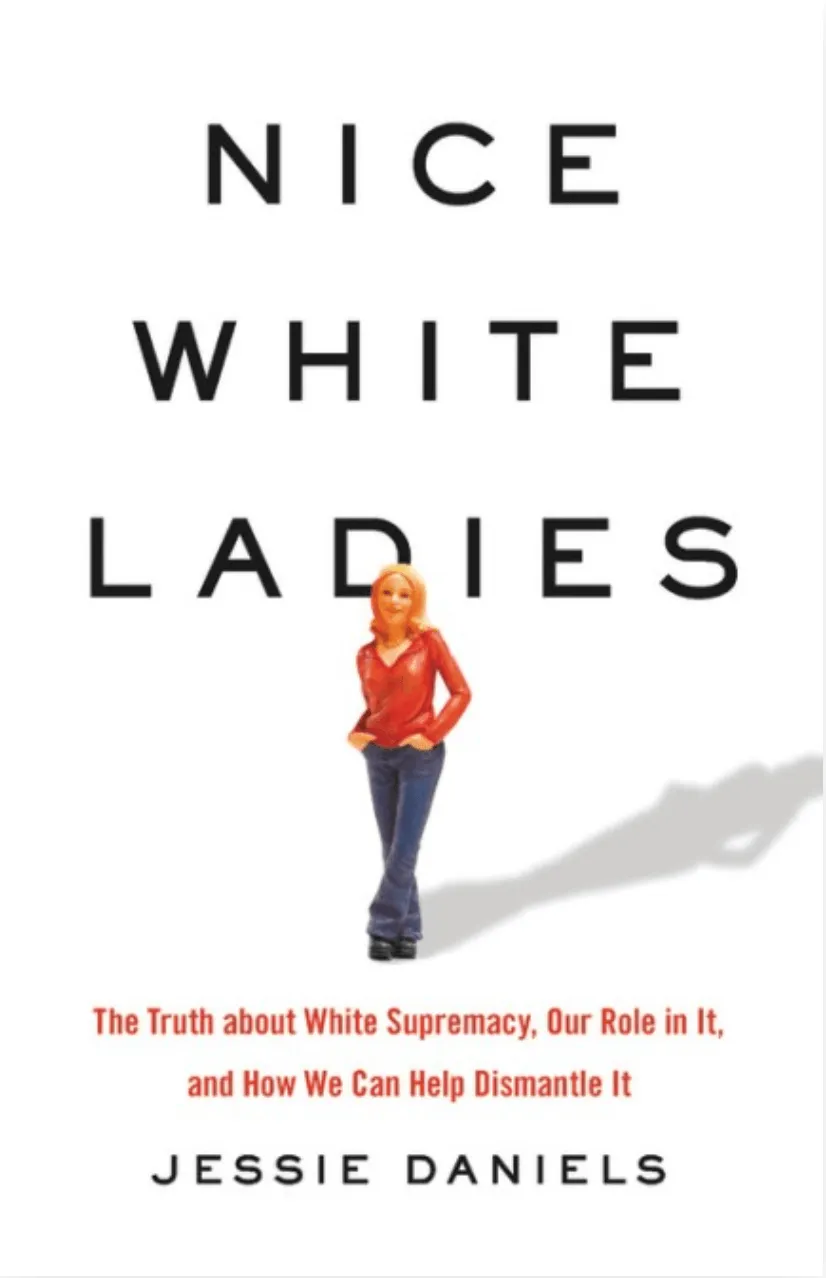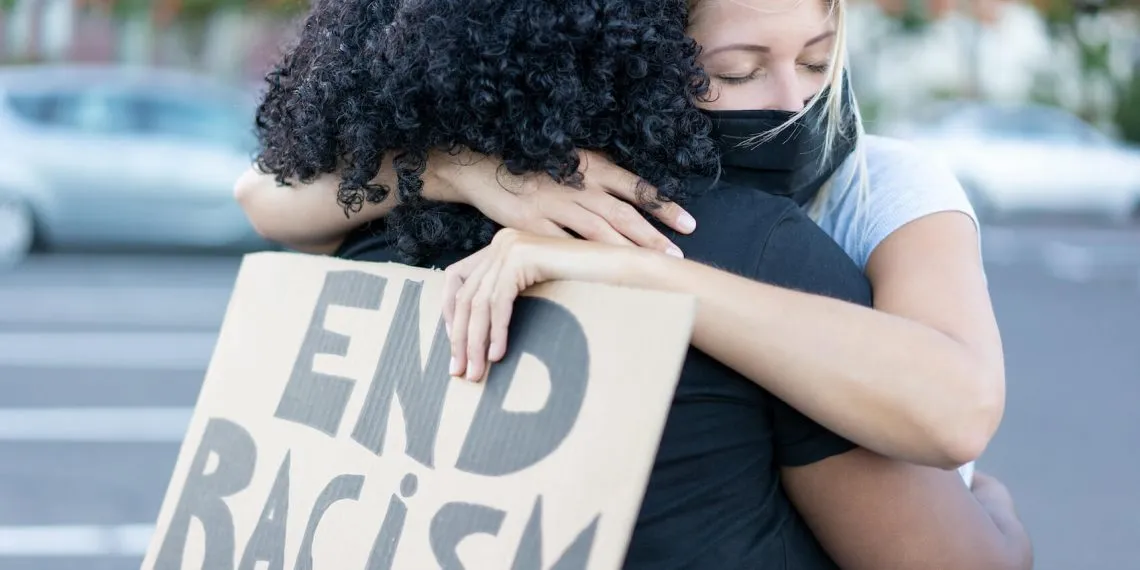In her book, Jessie Daniels deconstructs whiteness and scrutinizes individuals’ contributions to and relationships with it, making “Nice White Ladies” an excellent work of literature for those who understand that the practice of anti-racism cannot be disentangled from self-work. However much one may already know about the subject matter, Daniels’ confronting, academic, and personal approach will surely provide her readers with fresh insights.
Reviewed by Shirin Ananda Dias*
In her book “Nice White Ladies,” Jessie Daniels deconstructs white womanhood and details how it is historically and culturally linked to the inter-generational perpetuation of everyday, systemic, and institutional racism by white women in both the United Kingdom (UK) and, most notably, in the United States (US). Both by drawing on existent literature on race, gender, cultural and blackness studies and by giving detailed ethnographic and personal examples, Daniels details how white women – often with good intentions – contribute to the cycle of racism and demonstrates their complicity in the infliction of everyday micro-aggressions on communities of color.
Although the book is largely a cultural critique, it also serves as a “self-help book” for those seeking to break free from the toxic chains of whiteness, which inflict pain and suffering not only upon BIPOC (black, indigenous, people of color), but also upon white women and their families, through generational guilt and self-destructive defense mechanisms transmitted throughout decades. The book’s six chapters take the reader through Daniels’ personal and academic journeys, zeroing in on her experiences with white womanhood and racism throughout her life and academic career. She furthermore provides the reader with alternative constructive modes of ‘being white’ in a diverse and multicultural society.
In the first chapter of the book Daniels places white womanhood in historical context and lays bare, through a cultural and historical lens, how and why white women often feel threatened by and entitled to protection from the ‘other.’ Without vilifying the ‘Karens’ of today’s society, Daniels details how their (sometimes subconscious) feelings of white supremacy, entitlement to protection, and (lethal) power over the ‘other’, are surviving legacies of the colonial period. Within white supremacist society, black men were often lynched to protect white women –the underlying sentiment has survived through generations, resulting in instances of modern-day women weaponizing their white womanhood by using police and law enforcement against BIPOC. Daniels hereby demonstrates and emphasizes how white women’s actions perpetuate colonial cultural legacies to this day, and how they are consequently beneficiaries of colonialism and slavery.
In chapter two, Daniels illustrates how white feminists on both the left and right of the political spectrum tend to perpetrate and exacerbate racial inequalities through their supposedly universal and neutral feminist activism. From the pink pussy hats to the #metoo movement and other movements aiming for women’s liberation and “equal representation, compensation and power in the public sphere as men” (Daniels, 2021: 86), Daniels shows that these movements for women’s rights are far from universally inclusive. On the contrary, these feminist movements tend to engage in gender-only, (neoliberal) feminism that is oblivious to white privilege, race, and institutionalized racism (as well as other relevant intersections). Daniels therefore criticizes so-called liberal feminists on their lack of intersectionality and calls for the inclusion of critical race theory in feminist activism with the objective of the liberation of all women.
In chapter three, “The Shallow Promise of the Wellness Industry,” Daniels shows how women are targeted by all sorts of ‘self-care’ trends – clean eating, skincare products, yoga, mindfulness – which promise fulfillment and inner peace in a capitalist society. In one sense, these trends are shallow in their failure to deliver true fulfillment; in fact, their intertwinement with the capitalist system ensures that fulfillment is ever out of reach. Daniels, however, focuses on a different source of shallowness: namely, that purveyors of the wellness industry create white-only spaces, and construct a specific normative identity, namely the white-hetero-lady who is in need of care. In creating and orienting itself around this identity, the wellness industry excludes communities of color and obscures the reasons for their struggles. Wellness is portrayed as a product for consumption, instead of something that is contingent upon larger structural issues like systemic racism and poverty. Daniels also touches upon the wellness industry’s self-help books and criticizes renowned authors such as Brené Brown, for her work’s blindness to whiteness and white-shame, and Eat-Pray-Love author Elizabeth Gilbert, for romanticizing her soul-seeking journey to India without reflecting upon the white privilege that afforded her the means leave everything behind, travel, and ‘find herself.’
Chapters four and five discuss identity and kinship. In chapter four, “Love and Theft,” Daniels investigates the psychological and cultural reasons behind certain white women’s appropriation of BIPOC identities. Here Daniels discusses female academics such as Rachel Dolezal and Jessica Krug. She argues that it is the underlying emptiness that resides in whiteness, and, furthermore, white guilt, which drive white women to appropriate non-white identities, so that they can be seen and heard, or to deal with the psychological trauma of being white. Daniels furthermore details how white women, through ‘blackfishing’ or appropriating indigenous Cherokee identities, become the beneficiaries of policies like affirmative action, whereby their successes rest on the backs of those communities who need those policies most.
Not all white women deal with whiteness and white guilt in the same way as the Rachel Dolezals of the world. Daniels shows how many white women engage in white saviorism in order to assuage their white guilt. An example she discusses is the adoption of BIPOC children by white families, where an undercurrent of white saviorism can perpetuate microaggressions towards communities of color, with the indirect message being that white mothers are more capable of motherhood. As is furthermore shown in the chapter “Protecting White Families,” white women often engage in practices that benefit white families and disadvantage communities of color, by raising their adopted children in a “color blind”, household, rather than a “color aware” one, thereby implicitly downplaying racism’s existence. One’s own contribution to and participation in cyclical institutionalized racism and racial segregation often goes unnoticed; well-meaning and protective mothers, who accumulate wealth within their white families and shield their children from education in multi-racial settings, which Daniels coins as the “new Jim Crow,” seem unaware of the implications of their actions. In all examples, from white women physically protecting their homes with guns from Black Lives Matter demonstrators to those well-meaning women who accumulate wealth and education for their white families, Daniels emphasizes and illustrates how white families are “one of the most powerful forces of reproducing white supremacy” (Daniels, 2021: 193).
In the last chapter, “The Lie that is Killing All of Us,” Daniels details, through myriad examples of mental health cases (including her own mother’s), how whiteness not only poses a lethal threat to communities of color, but, even more so, how it threatens white communities. She argues that although white people are the beneficiaries of white supremacy (in that they have, for example, greater access to healthcare than communities of color do), white communities are also plagued by higher rates of depression than communities of color, and increasing addiction, mortality, and suicide rates. Daniels illustrates how nice white ladies suffer under the burden of white guilt. Building on this, Daniels exemplifies the impact white guilt has on the individual and collective health of white people and communities. In this vein, Daniels demonstrates how feelings of emptiness – inherent to whiteness – are often the root cause for infliction of harm of others, and for self-destructive behavior.
In the concluding section, Daniels refers back to previous chapters and provides the reader with detailed methods to develop an alternate, more constructive and justform of whiteness and white womanhood. Jessie Daniels herself strives to be “white without going white, to not take up all the space, to swerve away from the supremacy of whiteness” (Daniels, 2021: 234). The suggested liberators methods include, for example, rethinking social relationships with people who actively participate in the oppression of BIPOC, giving agency to women of color, and being their accomplice in dismantling white supremacy, amongst many other suggestions.
A potential critique of the book is that certain argumentations are rather reductionist, such as Daniels’ proclamations that the Kardashians’ cultural appropriation derives from their white guilt, or that the suicide of a white health worker during COVID-19 was motivated by the burden of white survival guilt. This is where Daniels draws hasty conclusions and appears to disregard the complexity of the human psyche despite her background in critical social psychology. Although I concur that there lays trauma in whiteness, not all behavior is necessarily attributable to whiteness and its discontents.
Despite this criticism, the book does insightfully deconstruct whiteness and scrutinizes individuals’ contributions to and relationships with it, making “Nice White Ladies” an excellent work of literature for those who understand that the work of anti-racism cannot be disentangled from self-work. However much one may already know about the subject matter, Daniels’ confronting, academic, and personal approach will surely provide her readers with fresh insights. It is a work that I would highly recommend to both academics and laymen seeking to understand the complexities of white womanhood and racism. I would especially recommend the book to white women, as no matter how “woke” one might be, there might be a “Nice White Lady, whether big or small, in all of us.
Jessie Daniels, Nice White Ladies: The Truth about White Supremacy, Our Role in It, and How We Can Help Dismantle It, Seal Press, 2021, 304 pp., $28, ISBN: 9781541675865
(*) Shirin Ananda Dias is an alumna of SOAS university London, where she obtained her bachelor’s degree in Social Anthropology. Her two main regions of academic interest are the Middle East and South Asia, where she indulges in political anthropology focusing on ethnic and religious nationalism and populism in the broader framework of globalization and contemporary international relations. She is currently enrolled in the MA program “Social and Cultural Anthropology” at the University of Amsterdam where she is finishing writing her master dissertation on the expression of Hindu nationalism in right wing Hindu nationalist Facebook groups during the COVID-19 pandemic. 


